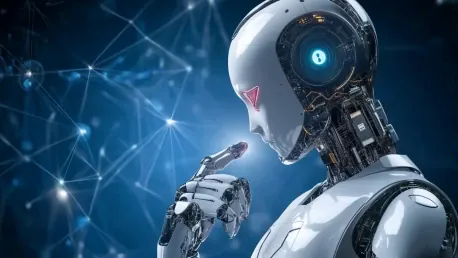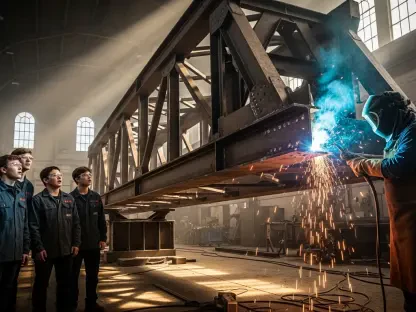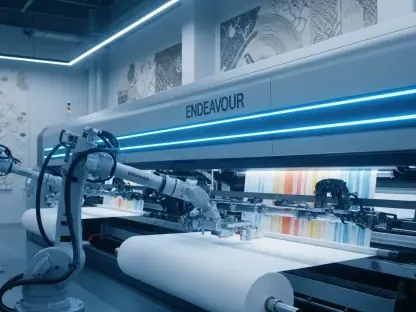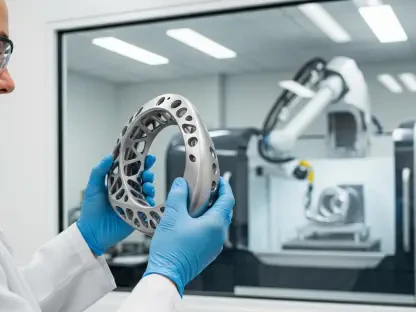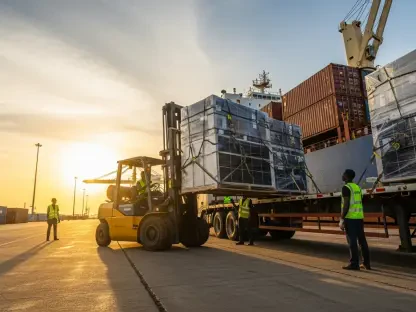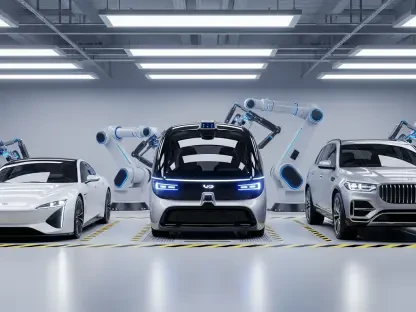The article “Real-Time AI Adaptation Revolutionizes Industrial Robotics and Efficiency” explores the transformative impact of next-generation AI-driven robotics in modern manufacturing. It highlights the shift from traditional AI systems to dynamic, real-time adaptive intelligence, focusing on the role of Artificial Specific Intelligence (ASI) in enhancing industrial practices.
The Challenges of Manufacturing Unpredictability
Intrinsic Variability in Manufacturing Environments
Manufacturing environments, especially those characterized by high-mix, low-volume (HMLV) settings, are notoriously unpredictable due to constant variability and changing demands. This unpredictability poses significant challenges for maintaining consistent production efficiency and quality. Traditional AI systems, which are typically designed to operate within predefined parameters using specific datasets, often struggle when faced with unexpected situations. This rigidity frequently leads to operational disruptions that can halt production lines and result in costly downtime for companies.
Traditional AI systems are inherently limited by their dependency on vast sets of historical data. These systems utilize backpropagation-based learning methods that necessitate extensive retraining whenever there are variations or new scenarios introduced into the manufacturing environment. This process is not only time-consuming but also financially burdensome, as it requires continuous updates to the dataset and frequent fine-tuning of algorithms. Consequently, when anomalies occur, traditional AI solutions are unable to adapt swiftly, leading to significant stalls in operations and negatively impacting overall productivity and operational efficiency within the industry.
Limitations of Traditional AI Systems
The limitations of traditional AI systems in manufacturing become particularly evident in high-mix, low-volume contexts where the variability of products and processes is the norm rather than the exception. Despite the advancements in AI technology over recent years, these systems still lack the flexibility and adaptability required to navigate real-world manufacturing challenges dynamically. The reliance on historical data means that traditional AI models can only make predictions and decisions based on patterns they have previously encountered. When new anomalies arise, these systems are left without the necessary tools to respond effectively.
Moreover, the need for continuous retraining adds another layer of complexity and cost. In fast-paced manufacturing environments, the lag between identifying a variation or anomaly and retraining the AI system to handle it can be detrimental. This gap not only disrupts the workflow but also introduces inefficiencies that compound over time, affecting the bottom line of manufacturing enterprises. As a result, the industry has been compelled to seek more advanced solutions that can offer real-time adaptability and context-aware decision-making to maintain and enhance efficiency in an unpredictable production landscape.
Transition to Real-Time Adaptive AI
Dynamic Learning and Context-Aware Decision-Making
To address the inherent limitations of traditional AI, there is a significant shift towards embracing dynamic, real-time adaptive intelligence in modern manufacturing settings. This approach revolutionizes the way machines learn and operate by implementing real-time, multimodal learning methods. Unlike static AI systems, which rely on predefined datasets, real-time adaptive AI continuously learns from live data streams, allowing it to adapt swiftly to changing conditions and make context-aware decisions. This capability is particularly crucial in high-mix, low-volume manufacturing environments where variability is constant.
Dynamic learning enables machines to process and integrate information from multiple sensory inputs, such as visual, tactile, and auditory data, in real-time. This multimodal approach allows for a deeper understanding of the manufacturing environment, facilitating more accurate and timely decision-making. By leveraging advanced algorithms and neural networks, these AI systems can quickly identify patterns and anomalies, adjusting their actions accordingly to optimize operations. This paradigm shift not only enhances productivity but also reduces the likelihood of operational disruptions, as the machines are equipped to handle unexpected situations autonomously and efficiently.
The Role of Artificial Specific Intelligence (ASI)
While much of the conversation around AI historically centered on Artificial General Intelligence (AGI), which aims to replicate human cognitive abilities broadly, recent advancements have demonstrated that Artificial Specific Intelligence (ASI) holds more immediate practical benefits for industrial robotics. ASI specializes in mastering specific tasks with unparalleled precision and efficiency, making it particularly well-suited for complex manufacturing processes. Unlike AGI, ASI does not require constant retraining to maintain its performance, as it is designed to excel in well-defined areas, enabling it to adapt to real-time variables effectively.
ASI systems are engineered to perform specialized mechanical skills with a high degree of accuracy, leveraging advanced machine learning techniques that allow for continuous optimization and self-improvement. These systems utilize real-time data to make split-second decisions, ensuring that manufacturing processes remain smooth and efficient even in the face of variability. The emphasis on specialization means that ASI-powered robots can achieve tasks that previously required significant human intervention, thus freeing up human workers to focus on more strategic and creative aspects of production. This capability positions ASI as a critical component in the next generation of industrial automation, driving forward both efficiency and innovation in manufacturing.
ASI in Industrial Applications
Aerospace Industry
The aerospace industry, known for its intricate and precise manufacturing requirements, stands to benefit significantly from ASI-powered systems. Aerospace manufacturing involves assembling complex components that demand advanced levels of dexterity and accuracy, which traditional AI systems have struggled to achieve consistently. ASI, with its ability to make split-second decisions based on live sensory feedback, offers a robust solution to these challenges. These systems can process vast amounts of real-time data from various sensors, enabling them to adjust their operations dynamically and ensure that every component is assembled with the utmost precision.
The real-time adaptability of ASI-powered systems in aerospace manufacturing cannot be overstated. For instance, when working on the assembly of a jet engine, the system can detect even the slightest deviations from the required specifications in real-time and make immediate adjustments to correct the errors. This level of real-time feedback and correction dramatically reduces the risk of faults and improves the overall quality of the final product. Moreover, by automating these complex tasks, ASI reduces the dependence on highly skilled labor, which is often in short supply in the aerospace industry, thus addressing a critical challenge faced by manufacturers in this sector.
Energy Sector
In the energy sector, where safety and efficiency are paramount, ASI-powered systems are revolutionizing how hazardous tasks are performed. Maintenance and inspection of energy infrastructure often involve working in environments that are dangerous for human workers, such as deep-sea oil rigs or high-voltage electrical grids. ASI systems are uniquely capable of performing these tasks with minimal human intervention, significantly enhancing safety and operational continuity. By leveraging real-time data and adaptive learning, these systems can conduct thorough inspections, identify potential issues, and perform necessary maintenance tasks without exposing human workers to hazardous conditions.
The ability of ASI systems to operate in real-time also means that they can respond to emerging issues more swiftly and effectively than traditional AI systems. For example, during an inspection of an offshore oil rig, an ASI system can detect early signs of material fatigue or corrosion and take immediate action to mitigate the risk of a catastrophic failure. This proactive approach not only ensures the safety of the infrastructure but also improves the overall efficiency of operations by preventing unexpected downtime. The implementation of ASI in the energy sector exemplifies how advanced robotics can address critical challenges while driving forward operational excellence and safety.
Future Trends and Industrial Imperatives
Enhancing Resilience and Adaptability
The future of manufacturing is increasingly reliant on the resilience and adaptability of its systems, which is why the adoption of ASI-powered robotics is becoming an industrial imperative. ASI systems’ ability to continually optimize themselves in real-time stands as a cornerstone for future industrial success. This continuous optimization leads to reduced operational costs, as machines can adjust to the most efficient modes of operation without requiring downtime for retraining. Additionally, the enhanced safety features provided by ASI reduce the risk of accidents and improve the overall work environment, which is crucial for maintaining a sustainable and productive manufacturing operation.
Industries that historically faced significant challenges due to variability and unpredictability are now finding new opportunities to streamline their processes and improve resilience. With ASI systems, manufacturers can ensure that their production lines remain flexible and responsive to changing demands, thus maintaining high levels of efficiency and output. This adaptability is particularly important in a global market where consumer demands and supply chain dynamics can shift rapidly. By leveraging ASI, manufacturers can not only meet these demands more effectively but also gain a competitive edge by being able to innovate and adapt to market changes more swiftly than their competitors.
Integration of Human Ingenuity and Machine Learning
The article “Real-Time AI Adaptation Revolutionizes Industrial Robotics and Efficiency” delves into the significant impact of cutting-edge AI-powered robotics on contemporary manufacturing. It underscores the transition from traditional AI systems to dynamic, real-time adaptive intelligence, with a key focus on how Artificial Specific Intelligence (ASI) is redefining industrial operations. This shift represents a major advancement from older technologies, enabling more efficient and responsive manufacturing processes. The role of ASI is particularly emphasized for its ability to improve productivity, streamline operations, and adapt to changing conditions in real time. This evolution is not just a technological upgrade but a significant leap forward in boosting industrial efficiency, marking a new era for manufacturing. The integration of adaptive AI in robotics means systems can learn and adjust on the fly, resulting in smarter, faster, and more flexible production lines. This innovation is set to revolutionize how industries approach automation and efficiency, heralding a future where adaptive intelligence is the cornerstone of industrial progress.
